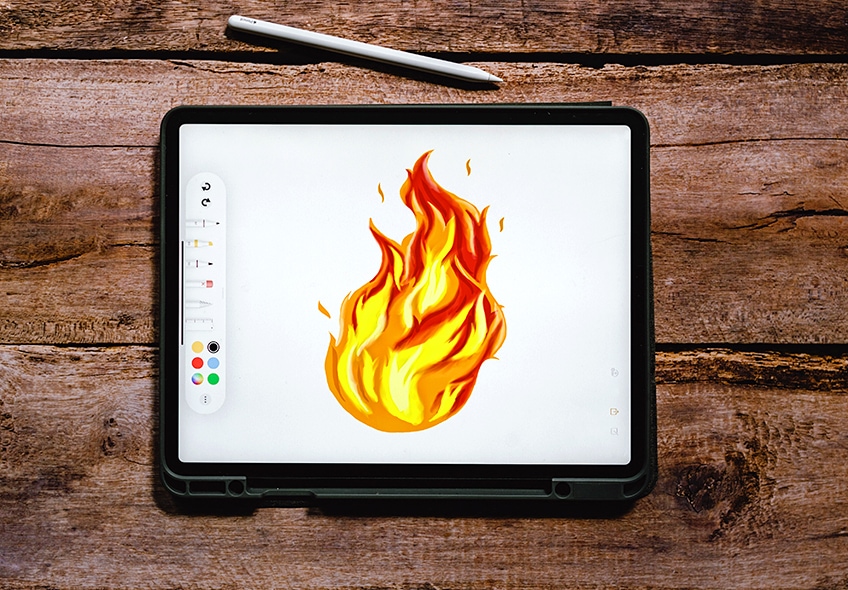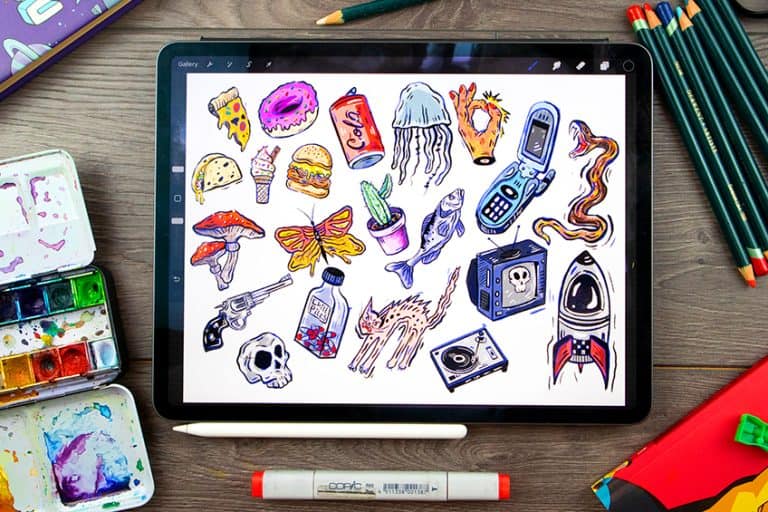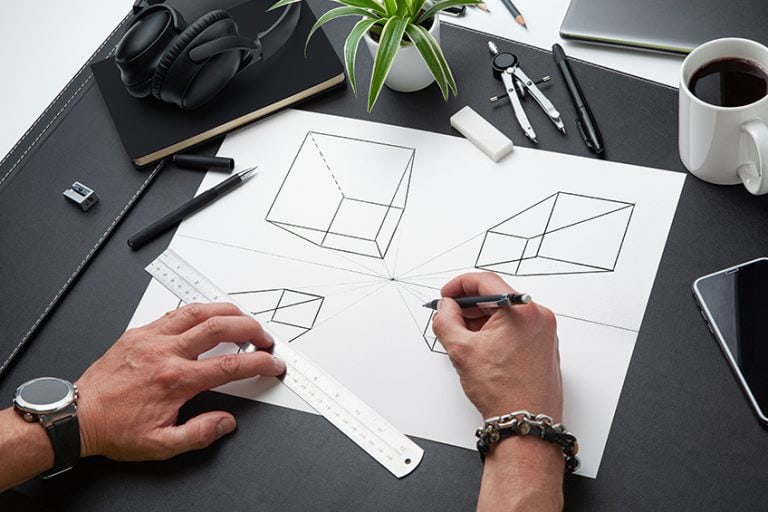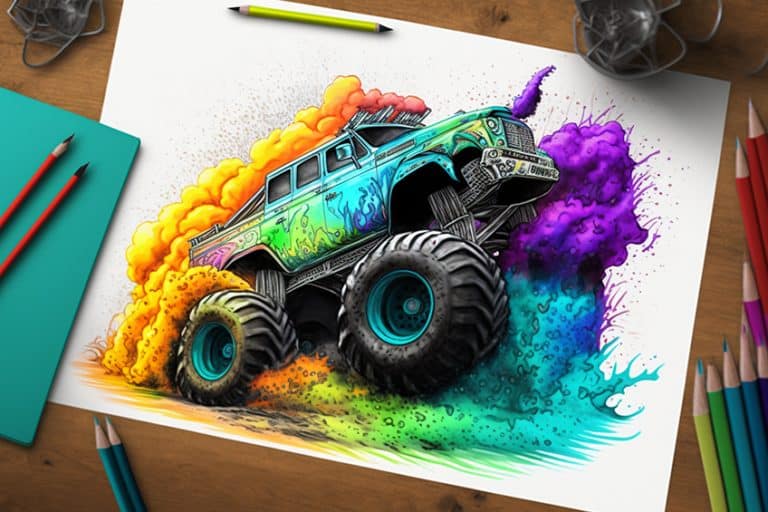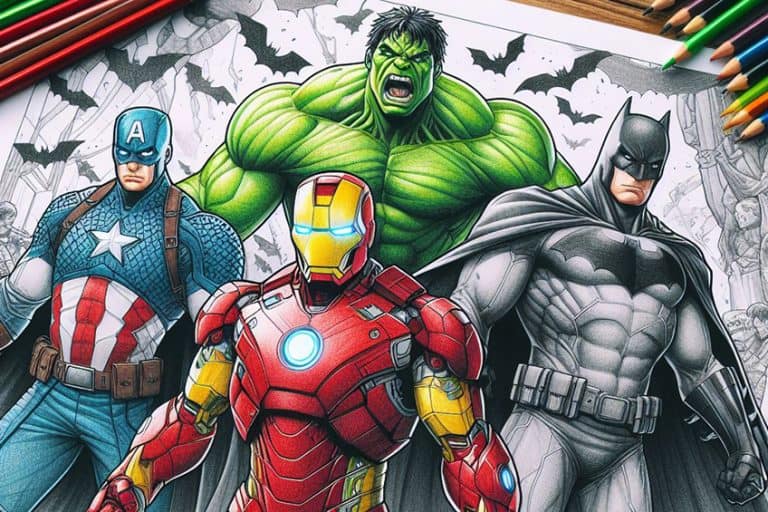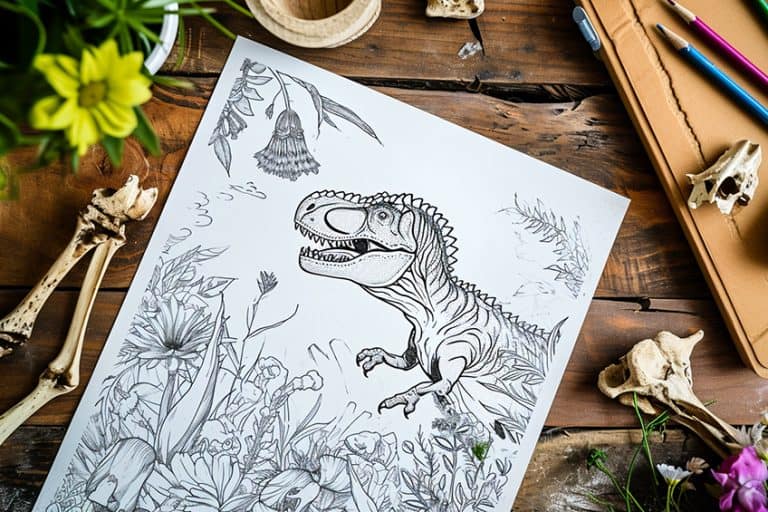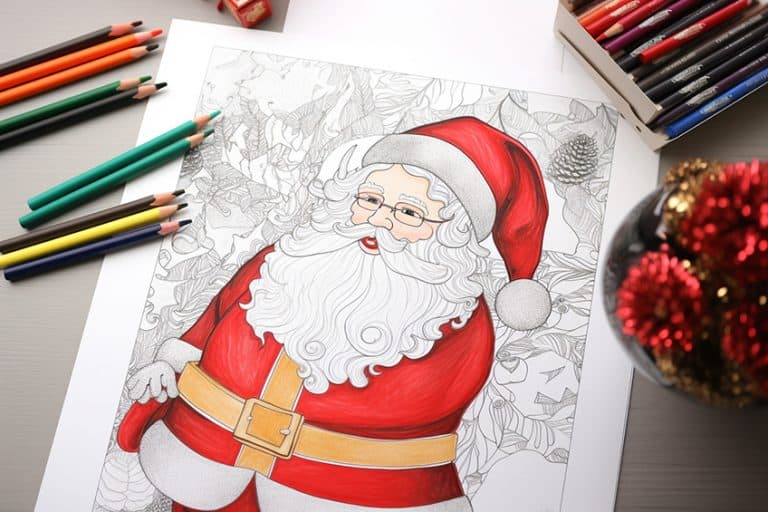How to Draw Fire – A Tutorial on How to Draw Flames
If you have been looking for a tutorial on how to draw fire, you have most certainly come to the right place! Fires and their flames are dynamic, which can make drawing fire tricky, but we will help simplify exactly how to draw flames in this fantastic tutorial. Read on as we break down, step by step, everything you need to know about flame drawing. Without any more waiting, let us get right into our step-by-step guide! Remember to have fun as you let your creative juices flow!
Step-By-Step Guide: How to Draw a Fire
Fire drawing has proven to be quite tedious and difficult for many artists, even those who are quite skilled. A reason for this could be because fire is so dynamic – it has no set shape or definition and is quite unpredictable, shifting and reshaping constantly. A fire sketch can be even more difficult to master thanks to the fact that fire is somewhat translucent, so it can also be confusing to see exactly where the flame ends and the air begins.
For this how-to, our fire drawing is going to be simpler and more stylized, enabling you to draw a fire that will be easily recognizable.
Art Supplies You Will Need
This tutorial can be completed either on a graphic drawing tablet or with the more traditional method of using pen and paper. If you are currently on the market for a tablet, check out the Gaomon Graphic Drawing Tablet. If you would prefer to complete your fire sketch on paper, here are some products we recommend you purchase in order to create a high-quality flame drawing:
- Paper: Canson XL Series Mix Paper Pad
- Line Work: Misulove Professional Drawing & Sketching Pencil Set
- Color: Prismacolor Premier Colored Pencils
- Eraser: Mr. Pen Eraser Set
Step 1: Construction of the Flame
If you are familiar with and have followed any of our drawing guides in the past, you will know that as per our tutorials, we always begin our sketches with what is known as construction lines. These lines construct the shape of what we are drawing, which in this case, is a fire drawing.
For our fire sketch, the first shape that will be drawn is a half-moon shape. It will be representative of the base of the fire, also known as the “belly” of the flame. Ensure that you place your half-moon shape on the page’s bottom center, allowing you enough space on the page for the rest of your flame drawing.
A very important thing that you must remember in this initial step is that the half-moon shape is only the start – so much more will still be added!
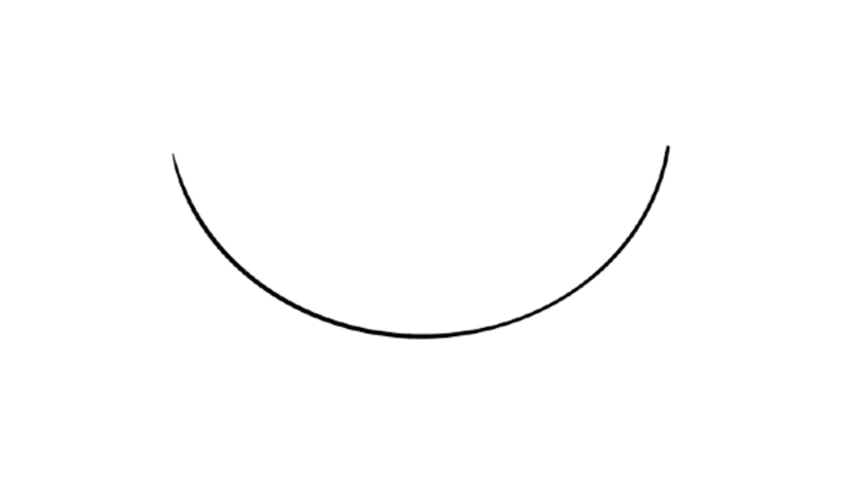
Step 2: The First Flares
In the second step of this fire drawing tutorial, we will draw the first points of the flame’s flare. You will draw one flared point on both the right- and left-hand sides of the half-moon shape. Each point of flare should dip outwards and then inwards while curving sharply towards the pointed part. Each of these curved shapes will end with a sharp point. Remember, because fires are not stagnant, both sides should not mirror one another nor should they be symmetrical. Fire is not perfect!
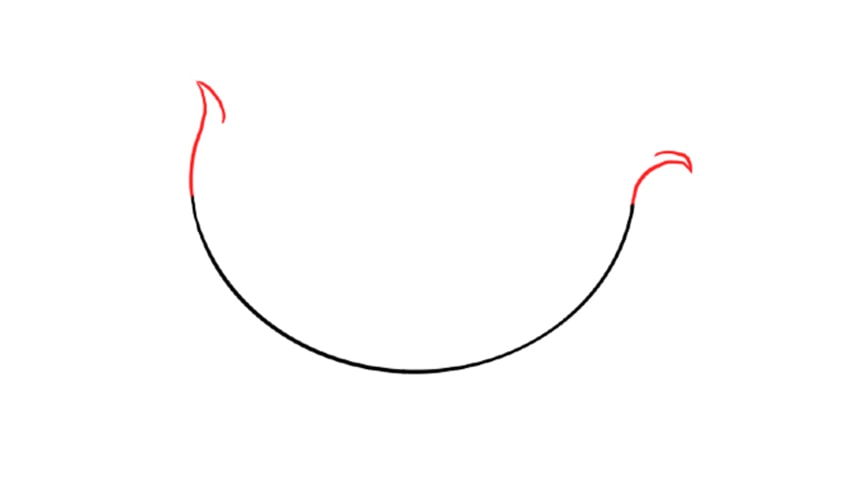
Step 3: Adding Shape
As you continue with our guide, you may notice that this tutorial allows for total freedom and self-expression in your sketch. This step is where you will be adding more height to your fire. This is done by adding another one or maybe two lines on both sides. Because you are drawing fire, make sure that these lines are curved. You can choose to replicate the shape we have drawn in our example, or, if you are feeling up to it, you can draw your fire freehand and make it more unique.
As you learn how to draw flames, remember that each and every flame is unique and non-identical to the next. Feel free to express this throughout your drawing.
During this part of the tutorial, you will also begin adding some defining lines within the body of the flames you have drawn. These lines are to be added within your existing lines and should naturally curve in the same way, although you can deviate them ever so slightly.
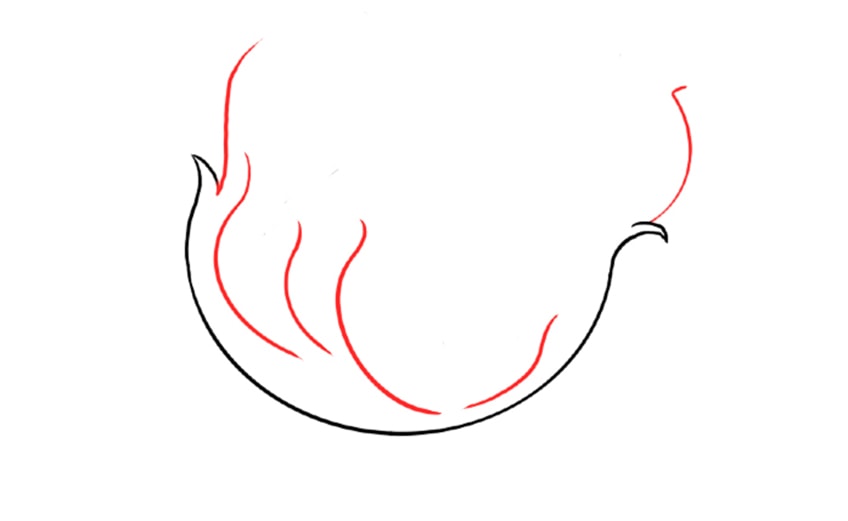
Step 4: The Inner Flames
Just as fire is so unpredictable, so are its flames! The shape of the flames of a fire can be difficult to capture. We suggest that you just go with the flow as you draw freehand, allowing for a variety of arches and curves within the flame.
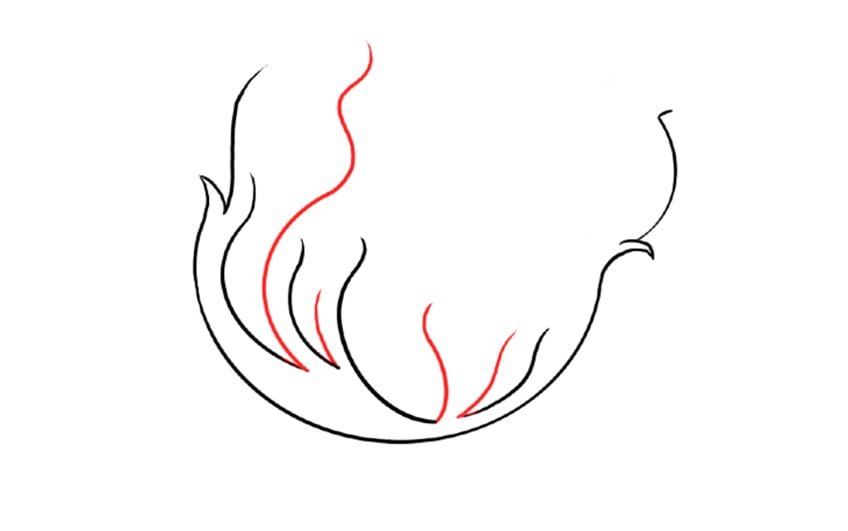
The sharp and pointed ends of each flame will connect your curved lines, just like the first two you drew in the second step. You will notice now that there are multiple smaller flames within your main fire, and that all these flames are based in the belly of the fire.
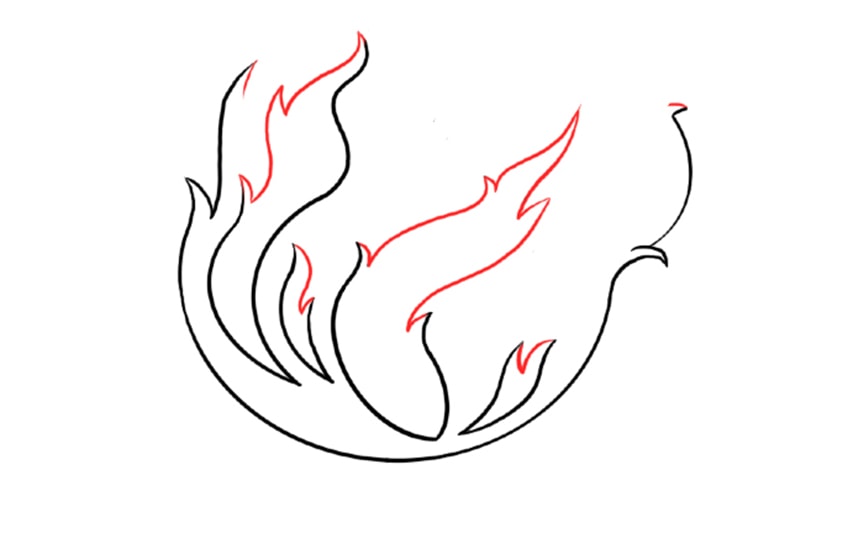
Step 5: Finishing Outlines and Shape
The outline of your fire will be completed during this fifth step, both within the flame and the main flame. Starting in the belly, you will now draw a few small flames. You can choose to do as many or as few little flames as you want – it is completely up to you! Remember, too much detail can actually hurt your drawing and hinder the final product – a simple case of less is more! If you are drawing on paper, be sure to use a pencil so that you can erase if necessary.
Be patient with yourself, as this step can be a little more tedious. Do not carry on with your fire drawing unless you are entirely happy with it.
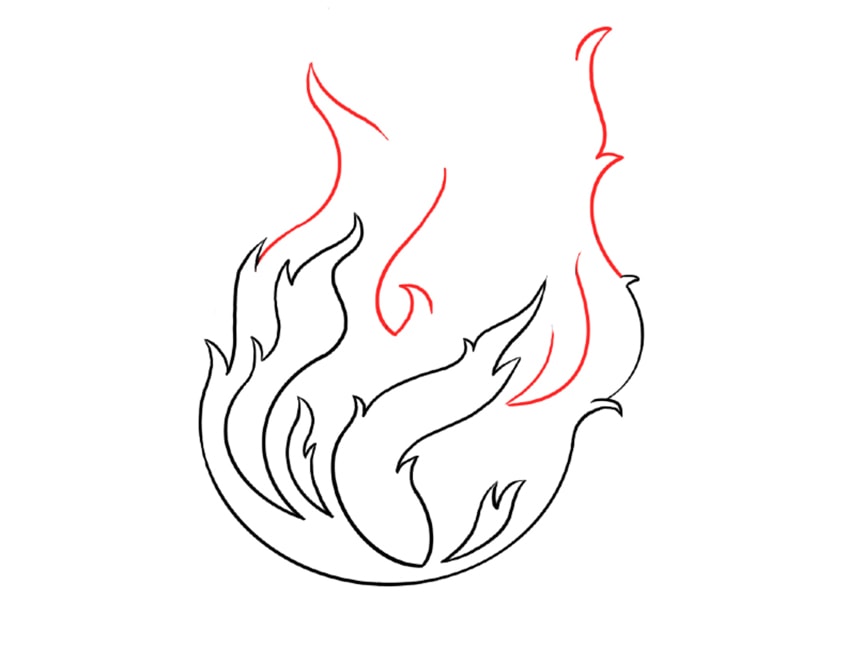
Now, you should add some more vertical but slightly curved lines to finish off the very tip of your fire’s flame. Feel free to add some additional sharp points or some squiggles here and there. You can copy our fire as is, or make yours more unique by using your creativity. Just remember that the fire’s tip is very important and should be a singular sharp point right at the top. You should be left with a final shape for your fire, and we trust that you are happy with your design. Have a look at our completed final shape below.
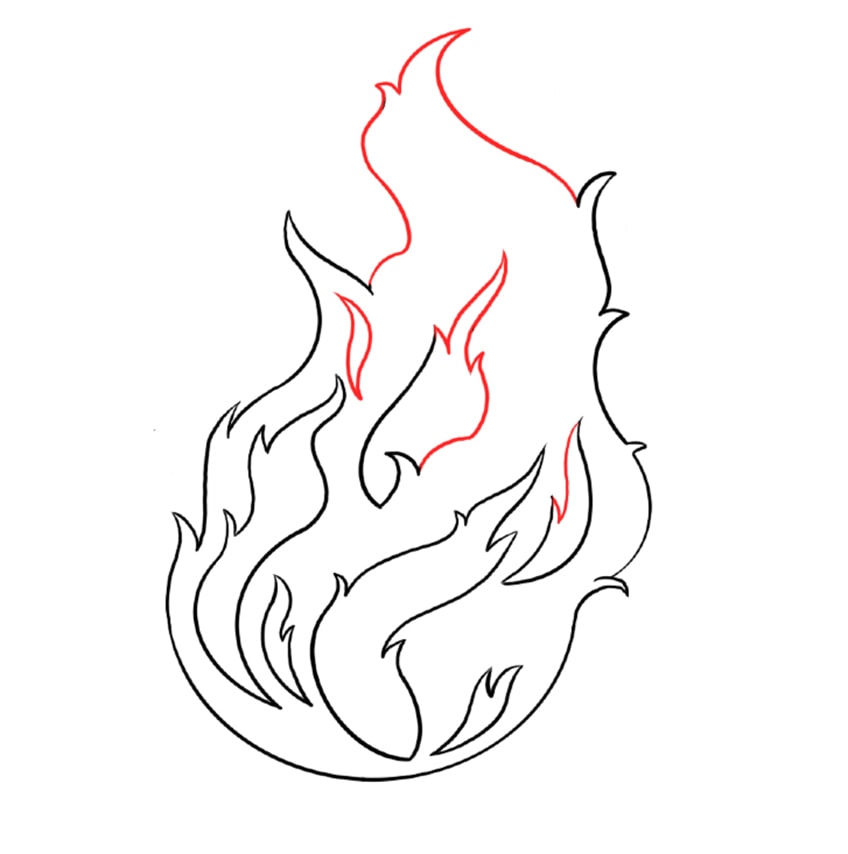
Step 6: Sparks and Smaller Flames
Now is the time to add a more realistic flair to your fire drawing! This is quite a simple step: All that needs to be done are a handful of S-shaped flames along the edges of your main fire. You can use your discretion as to how many or how few “S” shapes you prefer to add. Exactly where they will be positioned is also entirely up to you.
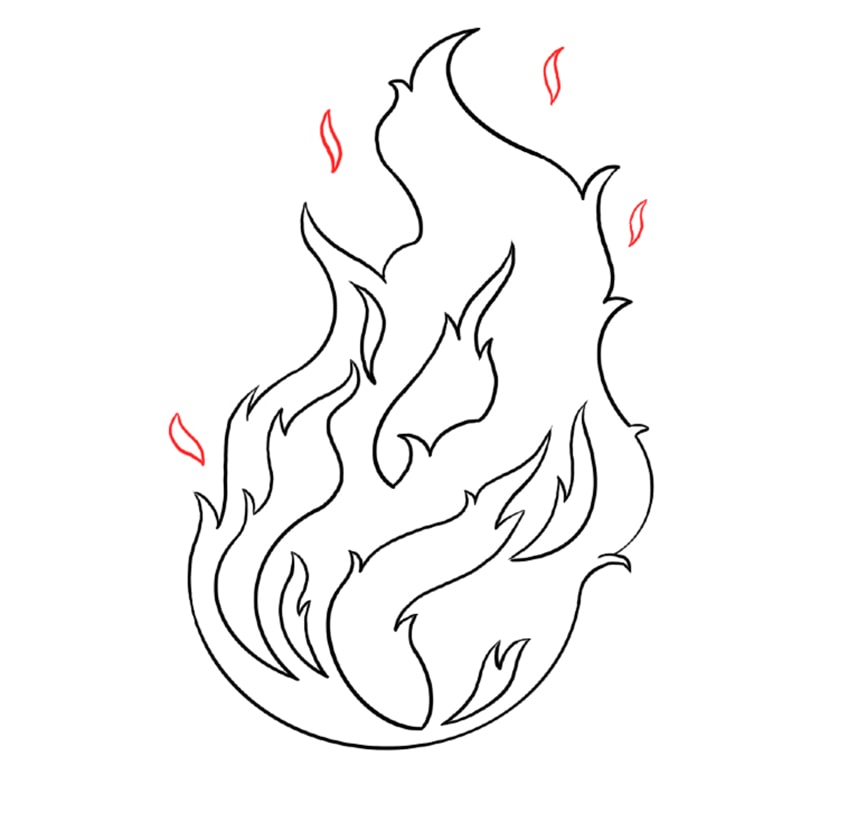
Step 7: Coloring in Your Flames
Step number seven – the second last step on how to draw fire. By now, your flame is practically done. This is the most exciting step because this is where you will be adding color. Remember, a fire has three basic but vibrant colors. The three colors that will be used to represent your flame are yellow, orange, and of course, red. You can decide on the shades you will use for each.
The yellow color will be the hottest part of your fire, which is the center of your flame. Next, comes orange, which is the fire’s base color. Red will be used in the shapes towards the top of your fire.
Remember, it is a good idea to try replicating your flame’s inner outline (the yellow part) with a red pencil to help it look more realistic in the end. Now, if you want, you can consider your fire drawing to be done, provided you are happy with it looking less realistic and more cartoon-like. Should you prefer a more realistic fire, continue on to step eight!
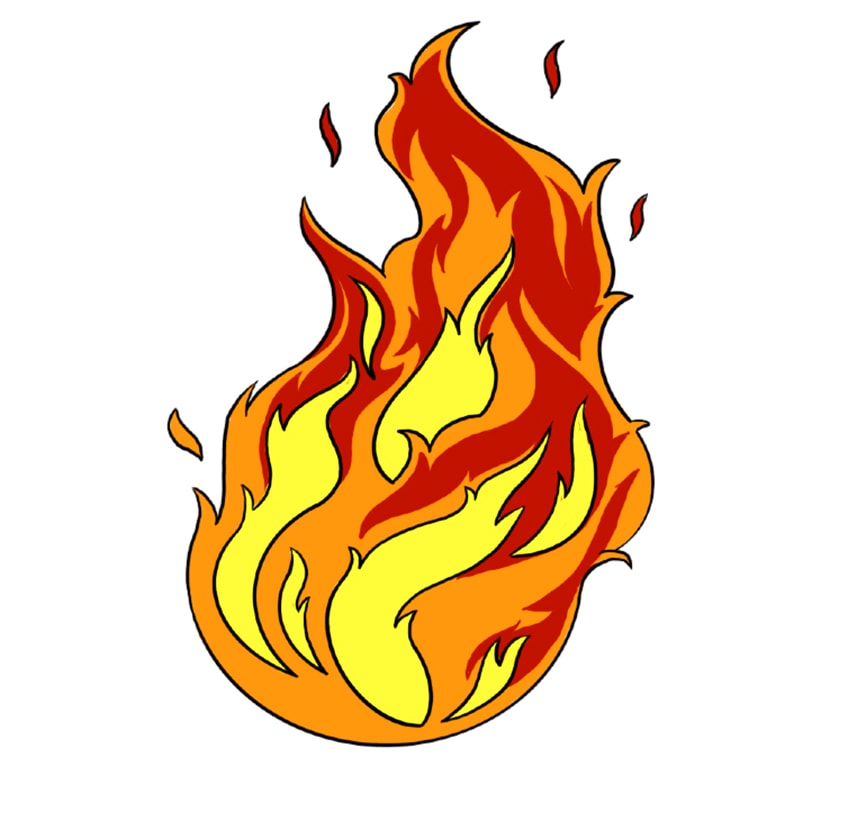
Step 8: Blending Color and Creating Highlights
If you have chosen to make your fire look more realistic, this final step will help you achieve it. In this step, we will be doing some blending and adding just a little touch of white on the yellow and inner flames of your fire, as well as along the small curves of your main flame.
We will also be adding a touch of white pencil in the small sparks. Using white will give your fire a three-dimensional effect and make it appear to be a lot hotter. If you are using a graphic tablet, use your brush tool to blend the colors together. If you have drawn your fire by hand, you can also use a brush to do this. By blending, you are essentially taking away those ridged lines that outline your fire, allowing it to seem far more realistic!
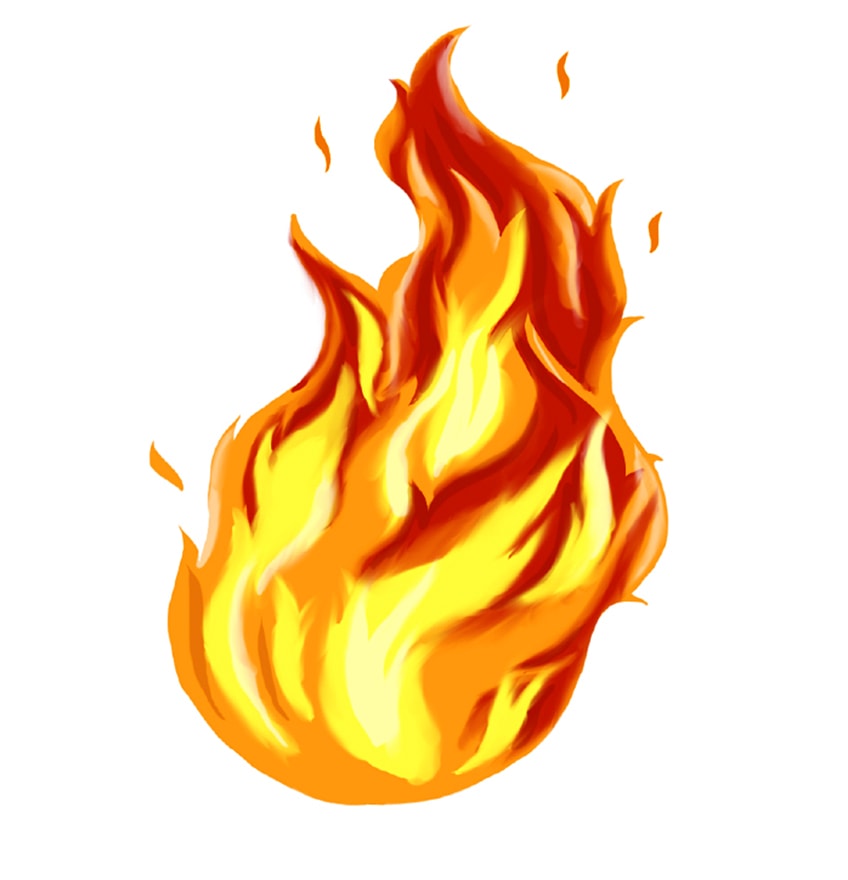
And you are done with our fire drawing guide! We trust that you have not only learned how to draw fire but that you are happy with your end result! While it can be intimidating and a little difficult to draw fire, you now have the basics down and should have no issue drawing more flames in the future, both in a cartoon style and realistically!
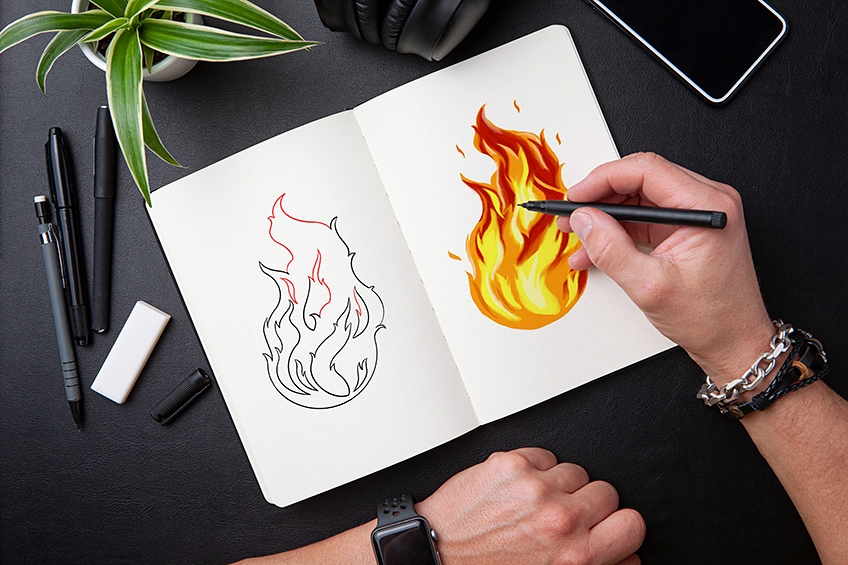
Frequently Asked Questions
Will This Guide Teach Me How to Draw Fire?
Most definitely! This step-by-step tutorial is intended to teach you everything you need to know to help you sketch fire, both in a realistic way, or if preferred, in a cartoon style.
How Do I Draw Fire Realistically?
Fire can be a rather complicated thing to draw, so we have included how to make your cartoon fire into a more realistic one in the last step of our easy tutorial. Our steps are super simple and easy to follow.
How Long Will It Take to Draw Fire?
Even if this is your first time drawing a fire, it should not take you too long to understand and get into the rhythm. This tutorial is very easy to understand and quite short, too.
Matthew Matthysen is an educated multidisciplinary artist and illustrator. He successfully completed his art degree at the University of Witwatersrand in South Africa, majoring in art history and contemporary drawing. The focus of his thesis was to explore the philosophical implications of the macro and micro-universe on the human experience. Matthew uses diverse media, such as written and hands-on components, to explore various approaches that are on the border between philosophy and science.
Matthew organized various exhibitions before and during his years as a student and is still passionate about doing so today. He currently works as a freelance artist and writer in various fields. He also has a permanent position at a renowned online gallery (ArtGazette) where he produces various works on commission. As a freelance artist, he creates several series and successfully sells them to galleries and collectors. He loves to use his work and skills in various fields of interest.
Matthew has been creating drawing and painting tutorials since the relaunch in 2020. Through his involvement with artincontext.org, he has been able to deepen his knowledge of various painting mediums. For example, watercolor techniques, calligraphy and lately digital drawing, which is becoming more and more popular.
Learn more about Matthew Matthysen and the Art in Context Team.


